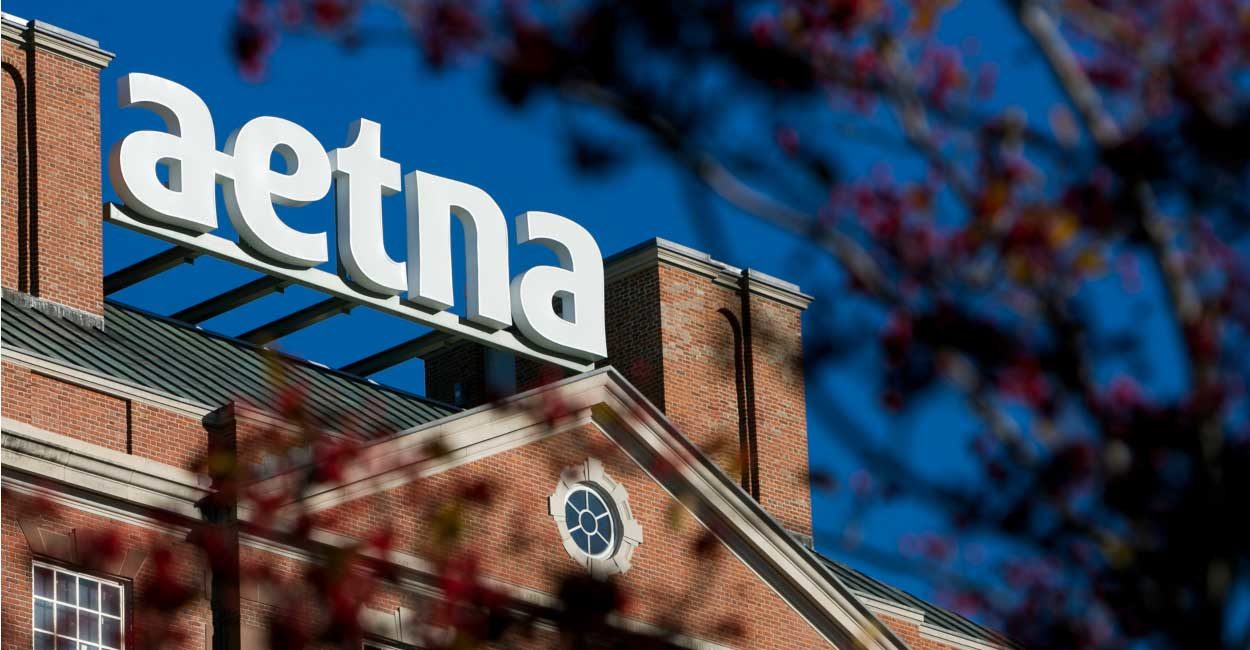Aetna’s Withdrawal From
Exchanges Highlights
Obamacare’s Inherent
Problems

Aetna sustained almost $700 million in losses between 2014 and 2016, and an estimated $200 million in projected losses for 2017. (Photo: Kris Tripplaar/Sipa USA/Newscom)
A major insurance company
has decided to entirely
withdraw from all of
Obamacare‘s health
insurance exchanges in
2018.
has decided to entirely
withdraw from all of
Obamacare‘s health
insurance exchanges in
2018.
According to the
Washington Examiner,
the experience with
Obamacare has been
a financial disaster for
Aetna, one of the nation’s
largest insurance
companies. The insurance
giant sustained almost
$700 million in losses
between 2014 and 2016,
and an estimated $200
million in projected losses
for 2017.
Washington Examiner,
the experience with
Obamacare has been
a financial disaster for
Aetna, one of the nation’s
largest insurance
companies. The insurance
giant sustained almost
$700 million in losses
between 2014 and 2016,
and an estimated $200
million in projected losses
for 2017.
Aetna joins a long line of
insurers and health plans
that have decided that the
individual markets designed
in exquisite regulatory detail
by the Obama
administration and its
allies in Congress are no
longer working.
insurers and health plans
that have decided that the
individual markets designed
in exquisite regulatory detail
by the Obama
administration and its
allies in Congress are no
longer working.
As designed, they can’t
work. This is a feature, not
a bug of Obamacare, and
why Congress needs to
repeal and replace this
dysfunctional law.
work. This is a feature, not
a bug of Obamacare, and
why Congress needs to
repeal and replace this
dysfunctional law.
Aetna’s withdrawal follows
a pattern. Insurers have
been losing money and
dropping out of the
individual markets. In 2013,
before Obamacare’s
insurance provisions were
enforced, there were 395
insurers selling plans in
the individual markets
throughout the United
States. By 2017, there
were just 218 insurers
selling plans in the
Obamacare exchanges,
a drop of 45 percent.
Part of the reason for the
declining number of
insurers is that
Obamacare’s
exchanges are
disproportionately
enrolling older and
sicker people, and
discouraging the
enrollment of younger
and healthier people.
declining number of
insurers is that
Obamacare’s
exchanges are
disproportionately
enrolling older and
sicker people, and
discouraging the
enrollment of younger
and healthier people.
That was not supposed to
happen. The Obama
administration initially
expected people aged
18 to 34 to account for
approximately 40 percent
of exchange enrollment.
Instead, the higher claims
costs of a larger-than-
anticipated number of older
people have been jacking
up the insurance premiums,
further discouraging
younger people from
signing up for coverage.
happen. The Obama
administration initially
expected people aged
18 to 34 to account for
approximately 40 percent
of exchange enrollment.
Instead, the higher claims
costs of a larger-than-
anticipated number of older
people have been jacking
up the insurance premiums,
further discouraging
younger people from
signing up for coverage.
This year, exchange
enrollees experienced
another round of rate
shocks. Nationwide
premiums for standard
plans have increased by
an average of 25 percent,
and people in those markets
have experienced shocking
deductibles
($6,092 for single
and $12,383 for low-cost
“bronze” coverage). Not
surprisingly, there are
thus far 500,000 fewer
exchange enrollees this
year than there were last
year.
enrollees experienced
another round of rate
shocks. Nationwide
premiums for standard
plans have increased by
an average of 25 percent,
and people in those markets
have experienced shocking
deductibles
($6,092 for single
and $12,383 for low-cost
“bronze” coverage). Not
surprisingly, there are
thus far 500,000 fewer
exchange enrollees this
year than there were last
year.
Obamacare’s health
insurance regulations
are making the cost
increases worse. Based
on a 2015 examination
of the Affordable Care
Act’s regulations, rooted
in a review of actuarial
studies in the professional
literature, Heritage
Foundation analysts
estimated that the age-
rating rule increased
insurance premiums by
about 33 percent for young
people, and the mandated
benefits by about 9 percent.
insurance regulations
are making the cost
increases worse. Based
on a 2015 examination
of the Affordable Care
Act’s regulations, rooted
in a review of actuarial
studies in the professional
literature, Heritage
Foundation analysts
estimated that the age-
rating rule increased
insurance premiums by
about 33 percent for young
people, and the mandated
benefits by about 9 percent.
Even Obamacare’s
individual mandate
penalties haven’t been
enough to stimulate
Americans to buy
coverage. The Obamacare
penalties are a lot cheaper
than the Obamacare
insurance costs. Based
on 2015 data, for example,
6.5 million people paid the
mandate penalty and 12.7
million got exemptions.
individual mandate
penalties haven’t been
enough to stimulate
Americans to buy
coverage. The Obamacare
penalties are a lot cheaper
than the Obamacare
insurance costs. Based
on 2015 data, for example,
6.5 million people paid the
mandate penalty and 12.7
million got exemptions.
The Senate needs to join
the House and get to
work on health care
reform. The sooner, the
better.
the House and get to
work on health care
reform. The sooner, the
better.
No comments:
Post a Comment
Thanks for commenting. Your comments are needed for helping to improve the discussion.